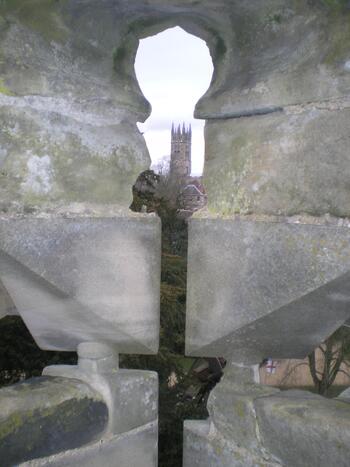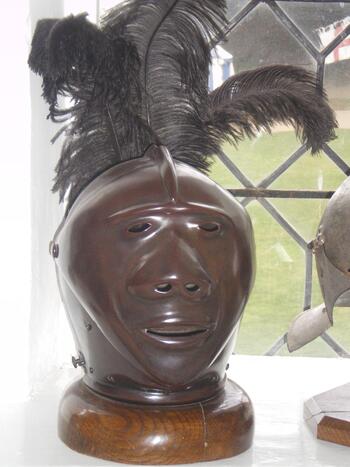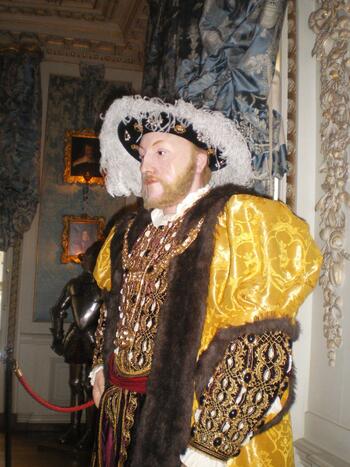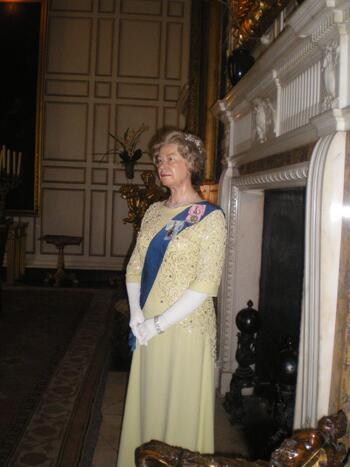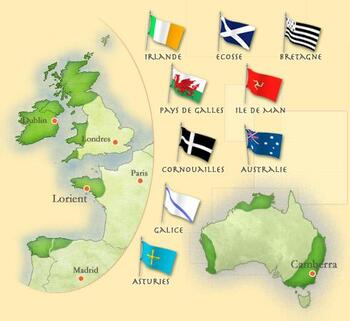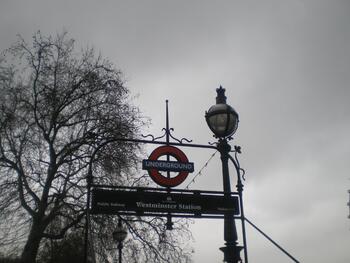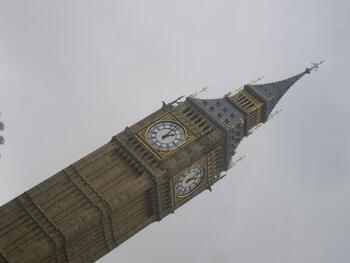-
-
I) présentation of the festival of lorient
The Interceltic Festival of Lorient (en) (or Gouelioù Etrekeltiek An Oriant (br)) was founded in Lorient, Brittany in 1971 by Polig Montjarret. This annual gathering takes place in the heart of the city every August and features Celtic traditional, classical, folk, jazz and rock musicians, singers, dancers, painters, sculptors, writers and other artists.They come from Brittany, Cornwall, Wales, Ireland, Scotland, the Isle of Man*, Cape Breton Island, Galicia, Asturias, and the entire Celtic diaspora.
The main festival sites are located throughout the city. The more formal events take place at the Palais de Congrès, Grand Théâtre or Eglise Saint Louis. The larger events take place at the Parc de Moustoir (the home of Lorient Football Club which can hold up to 10000 spectators), the Port de Pêche or in grand marquees.
The festival begins with the Cotriade (fr) or Kaoteriad (br), a traditional Breton seafood supper, which takes place in the Port de Pêche (fr) or Porzh Pesketa (br) harbour district accompanied by sea shanties and traditional Breton marine music.
On Sunday morning the spectacular Grand Parade of Celtic Nations takes place with over 3500 musicians, singers, pipebands and dancers from all over the Celtic world parading through the city streets in national costume.
The finals of the National Bagadoú Championship takes place at the Parc de Moustoir during the first weekend of the festival, with strong competition between Brittany’s finest pipebands. In addition individual competitions take place for pipers.
For those early risers, Master classes take place each morning with some of the world’s premier harpists, accordionists, fiddlers and pipers. Every afternoon hundreds of performers appear in folk and traditional music concerts and dance displays, and again in the evening there is a choice of several major events , including orchestral concerts, rock concerts and the not to be missed “Nuits Magiques”, spectacular displays of pipe bands, dancers, choirs and fireworks!
Every afternoon hundreds of performers appear in folk and traditional music concerts and dance displays, and again in the evening there is a choice of several major events , including orchestral concerts, rock concerts and the not to be missed “Nuits Magiques”, spectacular displays of pipe bands, dancers, choirs and fireworks!
Throughout the festival the “Village Celtique” (fr) or “Marc’had Etrekeltiek” (br) is open in the centre of the city offering food, music and literature, clothing and crafts.
On the final Saturday of the festival the focus again returns to the fishing harbour for the Nuit de Port de Pêche, featuring the best of Brittany’s folk and rock musicians.
There is, of course, much activity on the festival fringe, with musicians giving free performances in many of the city’s bars and pubs every evening until late.
The festival organisers have more recently embarked on similar ventures such as the St Patrick's Day concert in Paris, France which attracts a crowd of 70,000 spectators and the Celtica concert in Nantes, Brittany.some figures about the festival:
Annual dates: from the first Friday to the second Sunday of August.
Participants: 4500 musicians, singers, dancers, visual artists, academics and film makers, from Scotland, Ireland, Wales, Cornwall, the Isle of Man, Galicia, the Asturias, Brittany, the USA, Canada, Australia, etc...
Attendance: 650 000 spectators.
Duration: 10 days.
Organisation: International event. Contacts in all the regions and countries concerned (400 people are involved in ensuring that everything runs smoothly). All the organisational activities are managed directly (Transportation of 4500 people, 50,000 meals, 12,000 nights of accommodation, international public relations, finding sponsorship, looking for new talent, staging, creating shows).*Isle of Man
Located in the Irish Sea, the 570 sq. km. territory of the Isle of Man has 60,000 inhabitants, half of whom live in the old-fashioned seaside resort Douglas. This autonomous tax haven inherited the oldest parliament in the world from its Viking conquerors, the parliament has been operating on the Celtic hill Tynwald for more than a thousand years.II)The Celts, part of the collective memory of Europe
History books somewhat unflatteringly sum up the Celts as being nice barbarians who were crushed by the Roman legions for their own good. The reality is different however. They were the strongest nation in Europe whose land stretched from the Black sea to Ireland, probably the first union in europe. Forerunners of non-figurative art, they were the first to work with iron when the Greeks and Romans were still using bronze. They invented all the basic tools used up until recent mechanisation.
Thousands of our rivers, valleys and towns have kept their Celtic names. One of the first and foremost examples of this is "Paris" which the Romans wanted to call "Lutèce". Tristan and Iseult, King Arthur, Merlin and the Knights of the Round Table all feature strongly in today's global cultural imagination. "Halloween", the Celtic New Year, is back in fashion and these inventive, brave and sometimes revelling ancestors, previously considered to be stifled by history, have sprung back to life.Now a days, some "countries" like wales, scotland, brittany want their independence from UK and France but they also want to create a european union of celts. It's a paradoxe because they to have their own countries, so an augmentation of countries in Europe, but they want it to be unified in a same "Celts' union". I think in this period which in Europeans wants to be unified, we could, maybe, more underline this common past.
G.L.C 1S10
 votre commentaire
votre commentaire
-
-
In 1946, the Fourth Republic replaced the collaborator regime which was installed by the Nazis after their invasion of France during World War II. The Fourth Republic was characterized by a strong parliament and a Prime minister chosen by the majority party. Charles de Gaulle, who led the Free French Resistance movement against the Nazis, was elected but refused to participate and resigned.
After World War II, France decolonized Indochina, Morocco, Tunisia, and the rest of West Africa. The Fourth Republic also allowed women's suffrage. Violent conflict arose in Algeria, with bombings, terrorism, and the death of nearly one million people. The Algerian government, which supported the French government, collapsed; and, as a result, the people called Charles De Gaulle to resolve the problem. De Gaulle refused to take power unless the government would allow a stronger Presidential position. The people of France conceded, and in 1958 the Fifth Republic was formed with a strong<o:p></o:p> authoritarian President. However, De Gaulle's solution to the problem was to simply free Algeria.<o:p></o:p>
<o:p> </o:p>
In 1968, university students protest over their conditions, leading to massive strikes. As a result, De Gaulle resigned in 1969. From 1981 to 1995, Francois Mitterand served as President of France. He was a Socialist, and implemented numerous socialized programs. He instituted nationalized banks, insurance industries, and defense industries. Workers' wages increased during his tenure and working hours were reduced. However, when the French economy lagged, he abandoned socialism in 1984 and the French economy revived.<o:p></o:p>
<o:p> </o:p>
In 1995, Jacques Chirac became President as a member of the conservative Gaullist party.<o:p></o:p>
Currently, the French president is Nicolas Sarkozy, in office since 2007.
F. M. (Tle ES 2)
<o:p></o:p>
 votre commentaire
votre commentaire
-
<o:p> </o:p>
Recently, I have seen a film made for TV, “L’abolition”. This film relates the route of the lawyer Robert Badinter toward death penalty’s abolition in <st1:country-region w:st="on"><st1:place w:st="on">France</st1:place></st1:country-region>. It shocks me a lot and that’s why I chose to write an article about it.<o:p></o:p>
First I have to remind death penalty’s history. In <st1:country-region w:st="on"><st1:place w:st="on">France</st1:place></st1:country-region>, the law decreeing the abolition had promulgated 9th October 1981. It had suggested by Robert Badinter, the “garde des Sceaux” under Mitterrand’s precidency. Persons who were sentenced to death were guillotined. Voltaire, Hugo, Jaurès, Fallières, Camus, Badinter, Mitterrand, Brassens were opposed the death penalty. In <st1:country-region w:st="on"><st1:place w:st="on">Great Britain</st1:place></st1:country-region>, the last execution took place in 1964 and abolition’s law was promulgated in 1969. Since 2001 criminal can’t be executed for another reasons. In <st1:country-region w:st="on"><st1:place w:st="on">United States</st1:place></st1:country-region>, supreme yard had prevented the death penalty during 10 years, from 1967 to <st1:metricconverter productid="1977. In" w:st="on">1977. In</st1:metricconverter> 2008, 14 states are abolitionists : Alaska, North Dakota, Hawaii, Iowa, Maine, Michigan, Minnesota, Rhode Island ( except for a life imprisonment), Vermont, Virginia, Wisconsin, Columbia District, New Jersey (December of 2007), Massachusetts and State of New York (2004). Persons sentenced to death have a big appeal’s possibility that’s why their wait’s length on death row is long. Methods used are electric chair, gas chamber, but above all legal injection. Georges W Bush, Barack Obama, Bill and Hilary Clinton, John McCain, Rick Perry, Ann Richards, Michael B Mukasey etc… support the death penalty, although there are abolitionists too, like Georges Ryan, Ralph Nader, John Kerry or Clarence Darrow.<o:p></o:p>
In a majority of countries in the world, there is or there was a discussion opposing supporters the capital punishment and opponents. Persons support it because they think it must avenge victims and to kill their murderer will bring justice’s feeling to help their family to do their mourning. They think also that a killer must suffer the punishment he had done. Death penalty is, for some, a way to prevent the second offence and to prevent to overload jails which are expensive for states, to deter from kill, rape and to fight crime. Abolitionists ideas are: the capital punishment is immoral, society become criminal itself if it kills. Furthermore, life imprisonment is an heavy castigation, pools had proved death penalty not decrease criminality in relation to countries where it had been abolished. There are too the possibility of a miscarriage of justice and so perhaps to execute wrongly a convict, or still an unfair trial, for example in the case of racial discrimination, fake evidences or confessions given by violence.<o:p></o:p>
I am agreeing with those last arguments. I think we are not the right to remove the life of a person even she is a criminal. Furthermore we take the risk to assassinate an innocent. For me, execute a convict is commit a murder, a crime, like the convict had done before. Convict sentenced to death’s family will become a victim family and will suffer as much as murderer victim’s family. Societies, instead of kill those convicts, should treat sick criminal (psychological disease) and prevent crime, by helping persons who have problems… I think some criminal, not all of course, a first-time offender and so they have the right to be given a second chance, others deserve a punishment but the life imprisonment is sufficient.
The key (for map)
Blue: Abolished for all crimes
Green: Abolished for crimes not committed in exceptional circumstances (such as crimes committed in time of war) Orange: Abolished in practice
Red: Legal form of punishment for certain offenses <o:p></o:p>
Ducomet Charlotte 1èreS10
 votre commentaire
votre commentaire
